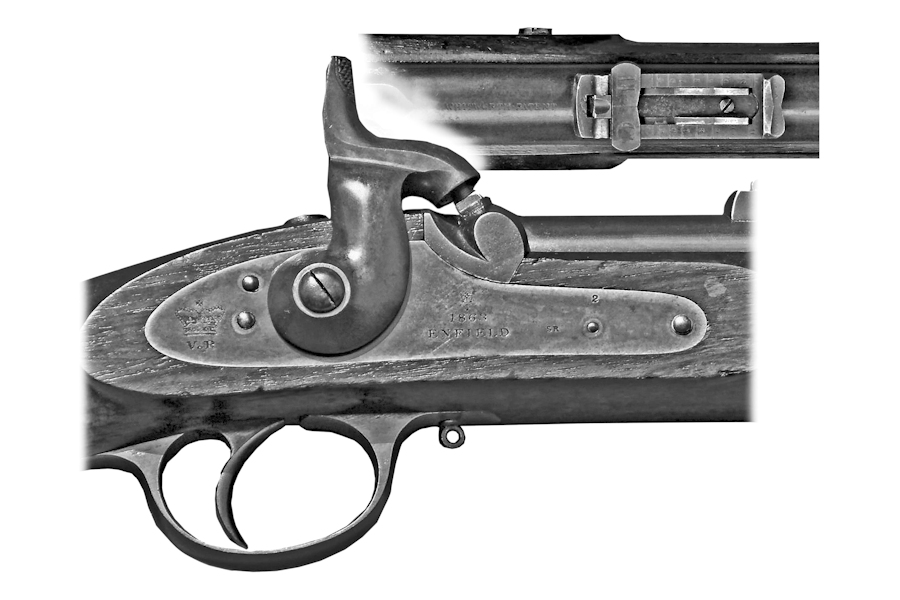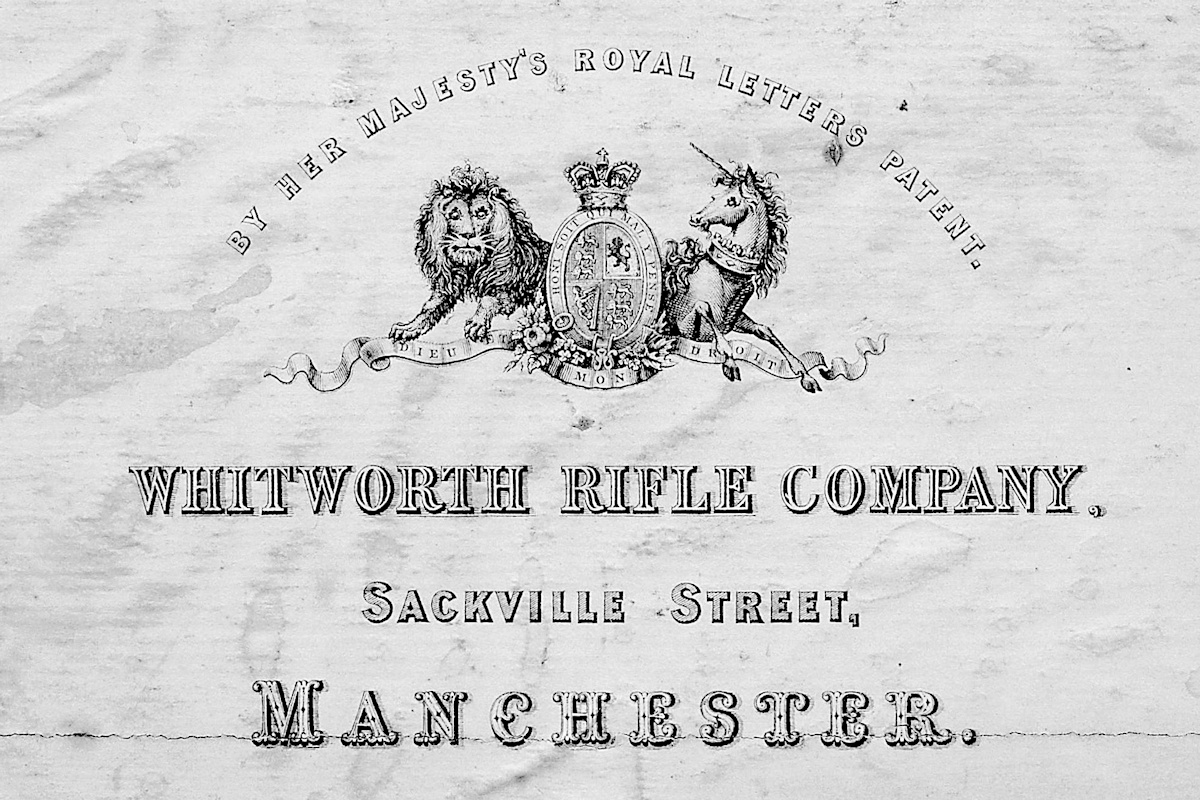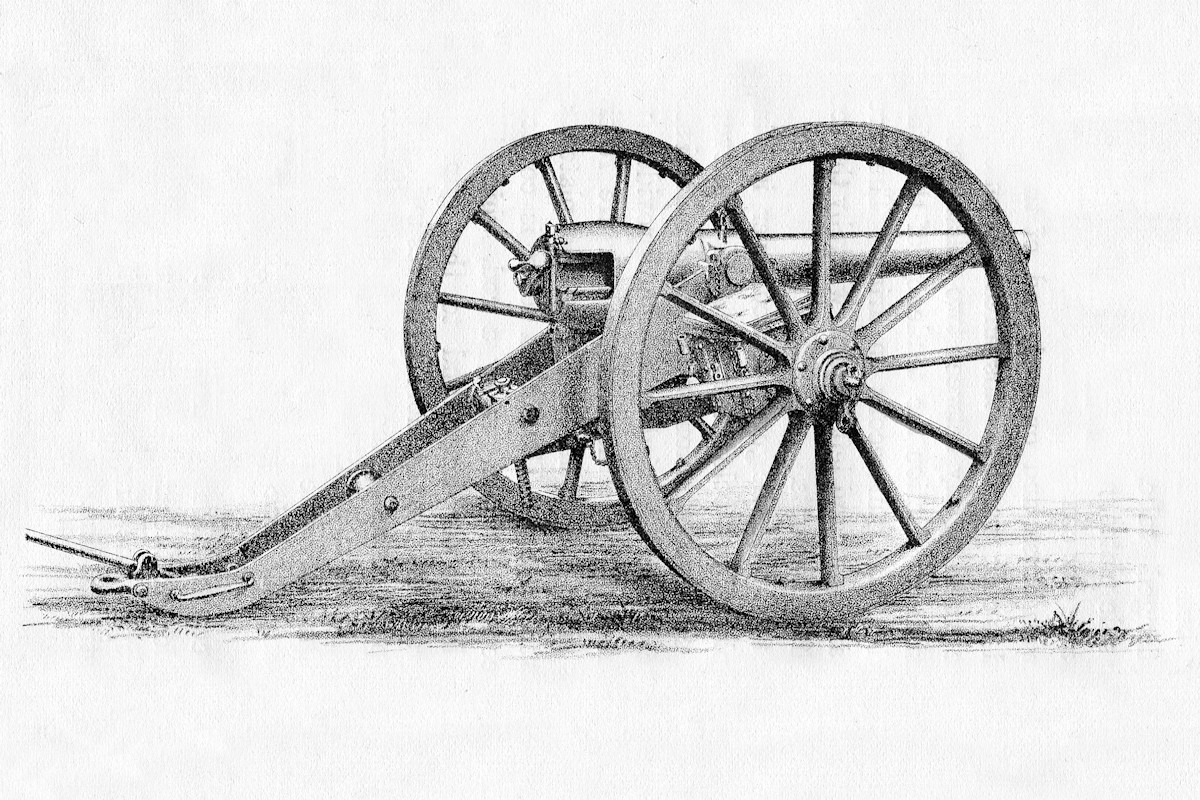Introduction > Comparative Trials > Hythe Trials > Woolwich Trials > Rifle Fired by the Queen > Ordnance Select Committee > Henry & Metford Rifles > Hexagonal Rifling
Rifle Trials At Hythe In 1857
The peculiar features or the Whitworth rifle may be summed up as follows:-
1.- The bore is much smaller than that of the Enfield rifle.
Whitworth – Maximum diameter .49 inch, – Minimum diameter .45 inch
Enfield – Maximum diameter .61 inch, – Minimum diameter .577 inch
2.- The length of the bullet is increased.
Whitworth – length 3 diameters
Enfield – length 1.81 diameters
3.- The twist of the rifling is increased.
Whitworth – 1 turn in 20 inches
Enfield – 1 turn in 78 inches
4.- The form of the Whitworth bore is polygonal, being a hexagon with the edges rounded. The form of the Enfield bore is cylindrical, with grooves and lands.
The Government were desirous of testing the merits of my new arm, and of comparing it with the Enfield rifle, and a series of trials were made by the direction of Lord Panmure. The subjoined account of these trials, is extracted from the “Times,” of April 23rd, 1857:-
For the last few days a very interesting and important series of experiments has been in progress at the Government School of Musketry, Hythe, in order to test the comparative merits of the Whitworth and Enfield rifles. The trial, which was of a most searching and impartial character, was conducted by Colonel Hay, the able head of the school, and has terminated in establishing beyond all doubt the great and decided superiority of Mr. Whitworth’s invention. The Enfield rifle, which was considered so much better than any other, has been completely beaten. In accuracy of fire, in penetration, and in range its rival excels it to a degree which hardly leaves room for comparison.
The following table gives the best results that have been obtained from 10 shots of each arm respectively in the course of the experiments, which were brought to a close yesterday, in the presence of Lord Panmure, and of a number of military and scientific spectators:-
Rifle Range
YardElevation
DegreesFigure of Merit*
FeetWhitworth
Enfield500
5001.1
1.320.37
2.24Whitworth
Enfield800
8002.22
2.451.0
4.11Whitworth
Enfield1100
11003.45
4.122.41
8.04Whitworth
Enfield1400
14005.0
6.20 to 7.04.62
no hitsWhitworth
Enfield1800
18006.40
—11.62
—* The figure of merit is the average divergence of the number of shots fired It would appear from these figures that at 500 yards, in 10 shots, the Manchester rifle has a superior accuracy of 1.87 of a foot; at 800 yards 3.11; at 1,100 yards 5.63; and that at 1,400 yards and upward, the Enfield weapon ceases to afford any data for comparison. In penetration the results have been equally decisive; the Whitworth projectile with the regulation charge of powder going through 33 half-inch planks of elm, and being brought up by a solid bulk beyond, while the Enfield ball could not get past the 13th plank.
All these were made by firing from a beautifully constructed machine rest, which placed both weapons on a footing of perfect equality, as to the other condition under which they were tested.
By referring to the table of experiments it will be seen that the target made by the former weapon at 1,100 yards so nearly as good as that made by the latter at 500 yards. These are great results to have achieved, and amply justify the forethought of the late Lord Hardinge in securing the services of so eminent a mechanic as Mr. Whitworth for the improvement of the rifle. Until he took the subject in hand the proper principles for guidance in the construction of the weapon had not been accurately determined.
General Hay informed me that the best figure of merit obtained by any rifle at a range of 500 yards, before the year 1857, was 24 inches, and here the new Whitworth rifle had a figure of merit of 12 inches at 800 yards, and of 4.62 feet at 1,400 yards. The figures of its competitor, the Enfield rifle, at the same ranges were 4.11 feet and “no hits,” that is to say, the Enfield bullet could not touch a target, 14 feet square, at 1,400 yards range.
The accuracy of the Whitworth rifle may be estimated from the following facts, a figure of merit of 10.5 inches has been obtained at a range of 1,000 yards, 20 shots being fired. At a range of 500 yards it is a common thing to obtain a mean deviation of 3 to 5 inches, from my mechanical rest in the gallery, with 20 shots.


